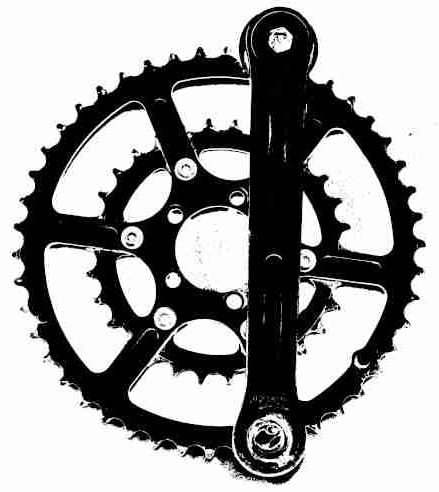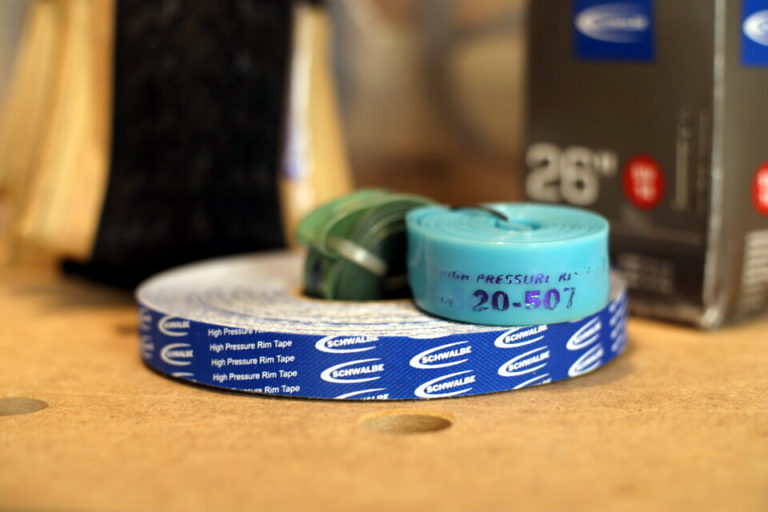Diagnosing Spoke Noise: 4 Causes and Cures
Spoke issues are one possible cause of noise emanating from a bicycle wheel. Noise from the spokes is not normal – it’s (almost) always a sign that something is wrong. Clicking, ringing and plucking means you should take action.
This article help you diagnose and fix spoke issues that give an audible signal. There are basically four common sources of spoke noise: low tension, improper seating, a broken spoke and spoke torsion relief. We will next take a look at how to tell what the problem is and how to fix it.

Cause 1: Too low spoke tension
The most common reason for spoke noise is too low spoke tension in the wheel. In an insufficiently tensioned wheel, some of the spokes may go slack during high-load events such as hard pedaling, braking, cornering, etc.
When spokes go slack, i.e. lose all tension, they tend to move an rub against crossing spokes. This is the source of the noise.
Detection: To check if your wheel is under-tensioned, you need either an experienced hand or a tensiometer. If you have neither, it is the best to bring the bike to a mechanic.
Fix: The noise will disappear when you tension the wheel properly. No spoke should ever go slack in a properly tensioned wheel in normal use: each spoke is under so much pre-tension that external loads will not bring the tension to zero.
Cause 2: Improper spoke seating & stress relief
An another less obvious cause of spoke noise in a relatively new wheel is improper spoke seating and stress relief. These operations are a part of a normal wheelbuilding process but may have been neglected or just done half way.
Spoke seating involves intentionally bending the spokes where they leave the hub or cross each other. This makes a clean and sharp turn into the spots where ones will eventually form anyway, and allows the spokes to assume their final stable positions from the start.
If spoke seating has not been done, the spokes will take their final shape over some time. During the process the spokes are likely to rub against each other at crossings and against the hub as they are finding their new places.
This rubbing may create creaking noises; the wheel may also go slightly out of true. Like with low spoke tension, this noise is most likely under high wheel loading events like climbing, braking or cornering.
Detection: Check the shape of the spokes where they cross each other. Properly seated spokes make a sharp turn and are perfectly straight before and after the crossing. Improperly seated spokes make a smooth gradual turn over many inches.
Fix: Seat and stress relieve the spokes and re-true your wheel. Seating is usually done by bending the spokes by hand or with an old crank; follow standard wheel-building instructions for this step. Seating and particularly truing takes some skill – be ready to learn or take the wheel to a mechanic.
Cause 3: A broken spoke
One possible source of spoke noise is a spoke that is actually broken. A broken spoke often hits neighboring spokes as the wheel spins, making intermittent high-pitch ringing noises.
You’d think a spoke breaking would be something obvious. But no – quite often you notice it only after some riding and wondering about funny wheel noise. (I admit having ridden a day’s commute with a broken spoke at least twice.)
Detection: Look for a spoke that clearly does not follow the pattern. You can also run your hand along the spokes and see which feels loose.
Fix: Remove the broken spoke, replace it with a new one and true the wheel. There are plenty of excellent guides online for this. Sometimes possible without removing the tire!
Cause 4: Spoke torsion relief (No harm!)
A recently trued wheel can make noise on the first ride due to relief of twist in the spokes. Unlike the three causes above, this source of spoke noise is completely innocuous and will disappear very soon.
Truing involves rotating the spoke nipples that are essentially nuts on the spoke. The spoke is long and flexible, and tends to twist along the nipple slightly (1/4…½ turns) due to friction in the threads. These twists usually undo themselves as you load the wheel: the spoke springs back and rotates the nipple in its seat. This process makes a plucking noise.
Detection: Spoke twist is impossible to see after truing. But there is also no need to.
Fix: Fixes itself quickly in use. You can also avoid spoke twist while truing by changing your technique.
Are you sure it’s the spokes?
If none of the above 4 spoke noise causes seem to match, check if the noise comes from somewhere else.
The hubs are an obvious suspect, but also disc brakes and frame cracks may cause creaking similar to spoke rub.
Prevention is better than cure
Well-built wheels will save you from dealing with spoke noise. Big overloads aside, you should rarely (if ever) have to touch your spokes.
Initial spoke seating, tensioning, and wheel truing are actually more important than really expensive components. Even the most basic aluminum rim and spokes will make a strong wheel if properly assembled.
A personal anecdote: I built my first wheels 8 years ago following Sheldon Brown’s instructions. Now after more than 20 000 miles on the wheels, there’s no noise, no broken spokes, no truing required at any point. Contrast this with machine-built wheels I rode earlier, which lost 1 to 3 spokes and took at least one truing each year.


